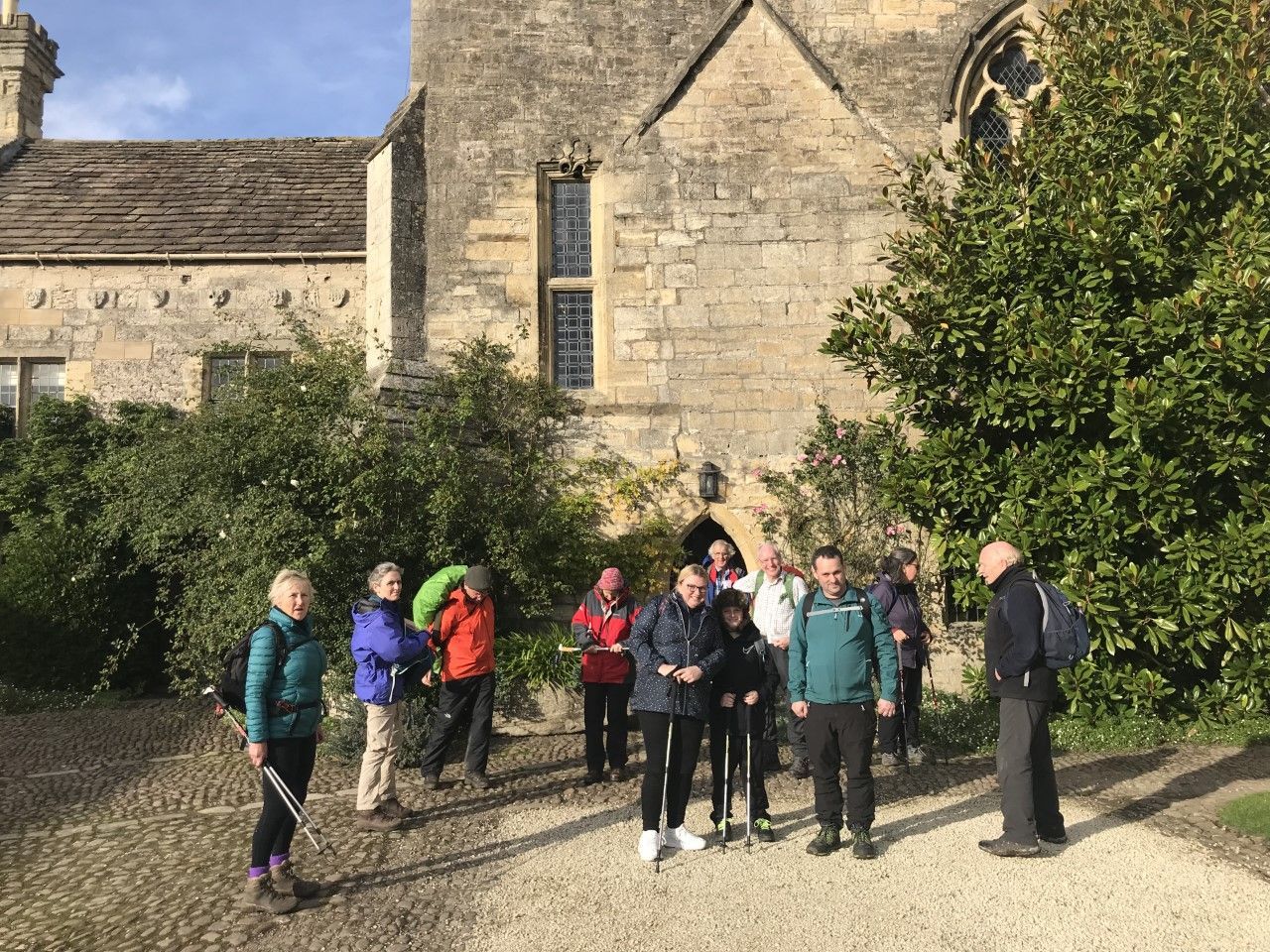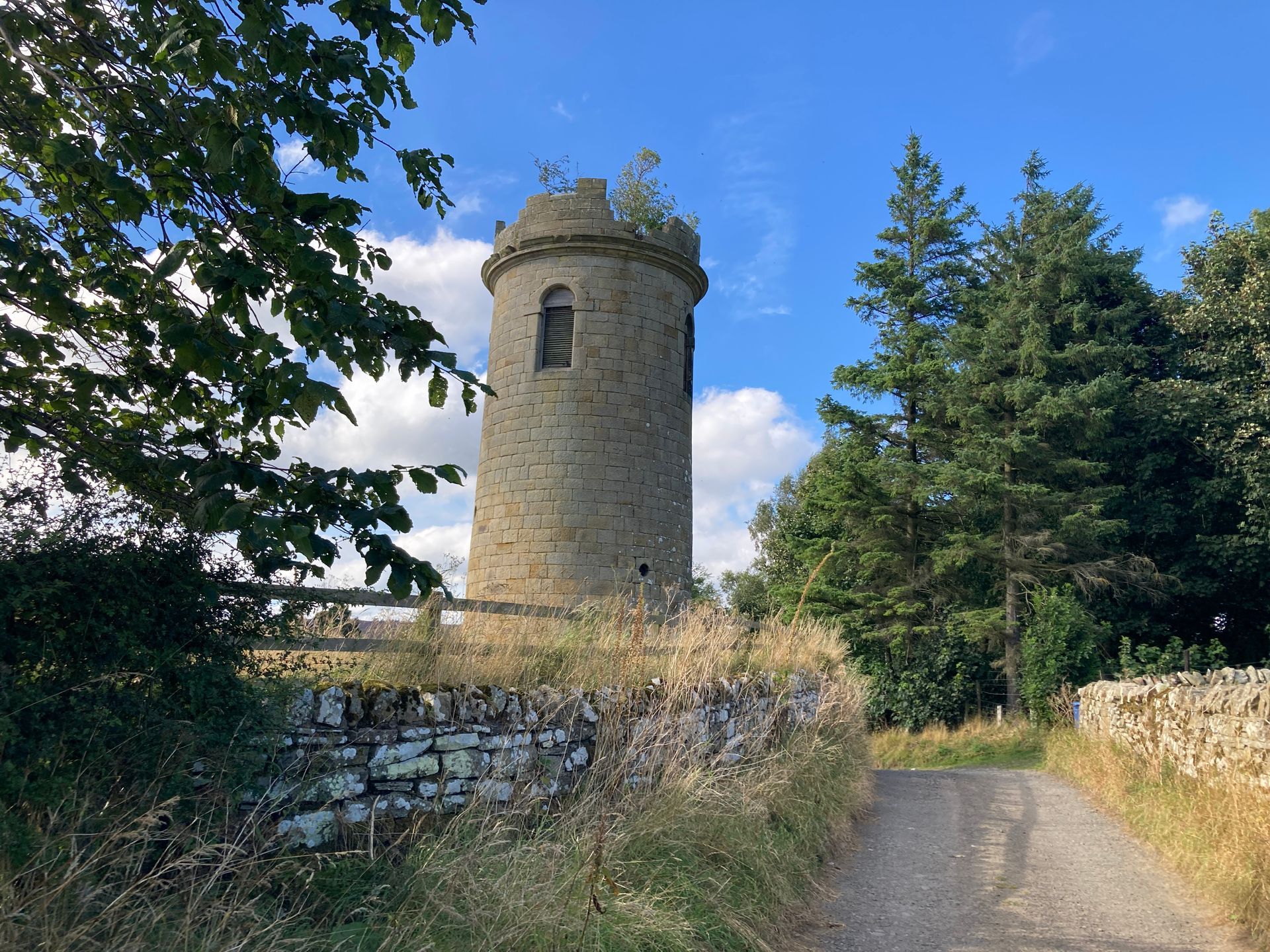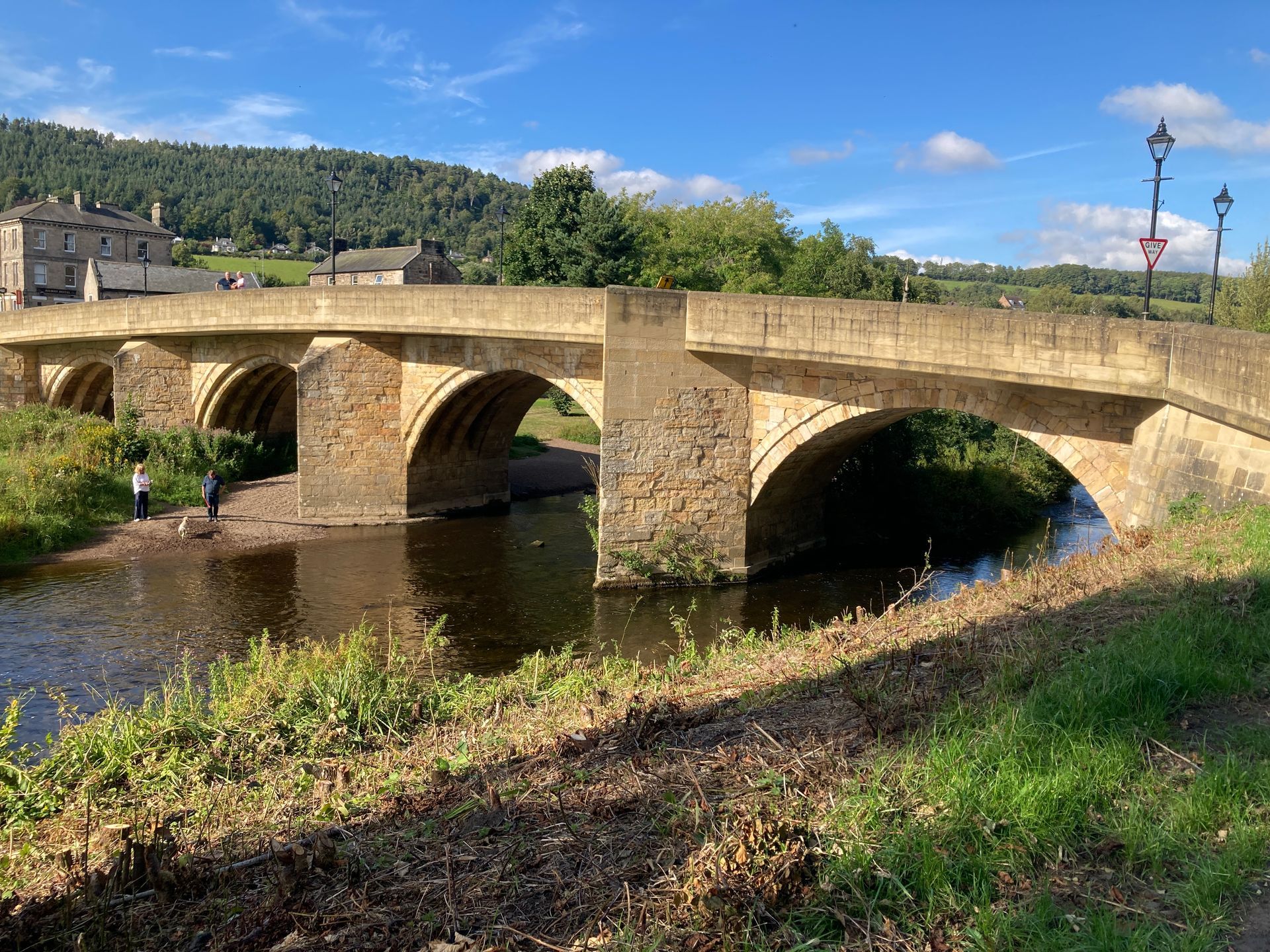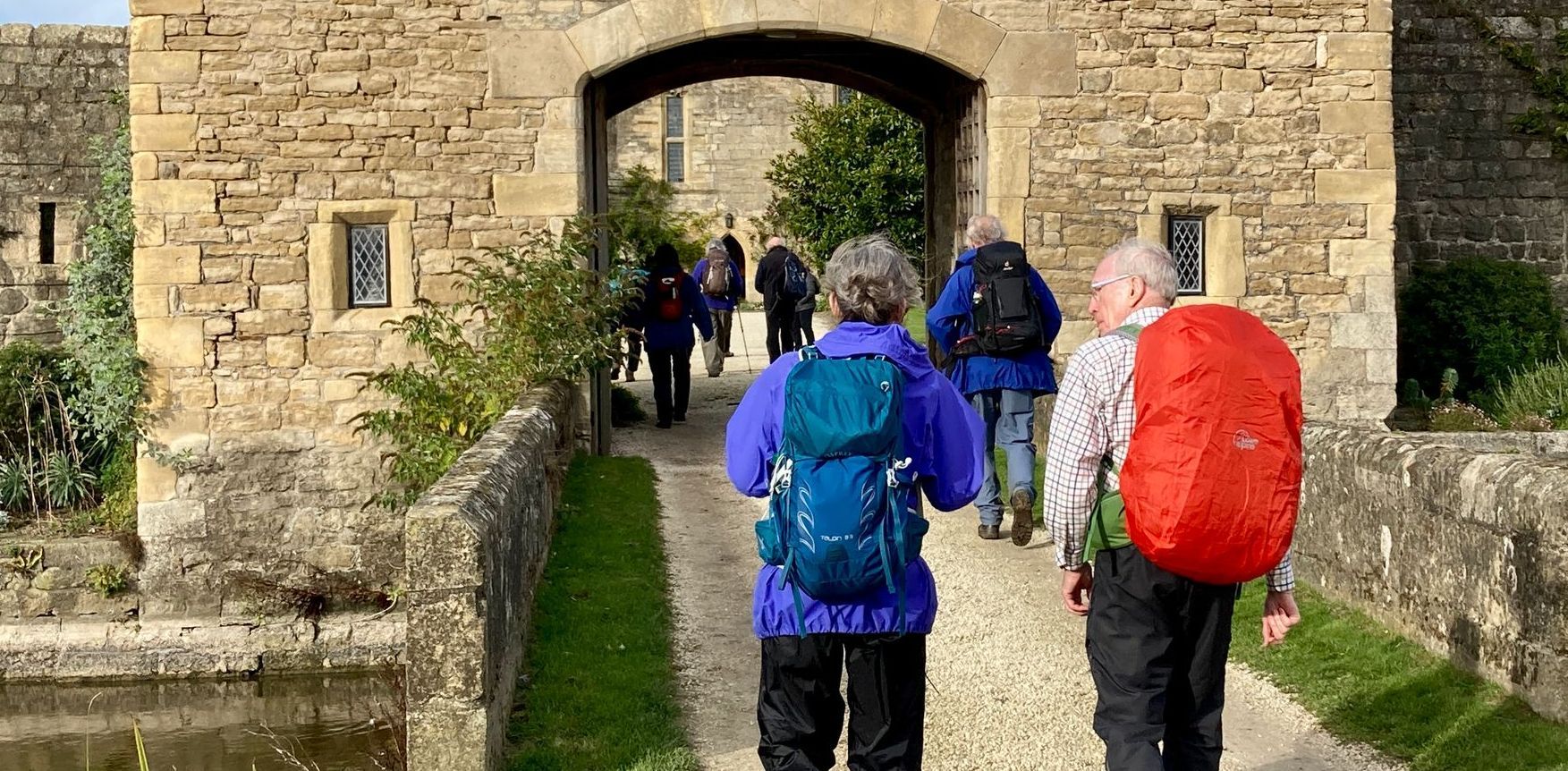The Holystone Way
A Pilgrim Way for the Diocese of Hexham & Newcastle from the Cathedral of St Mary in Newcastle to the shrines at Jesmond and Holystone
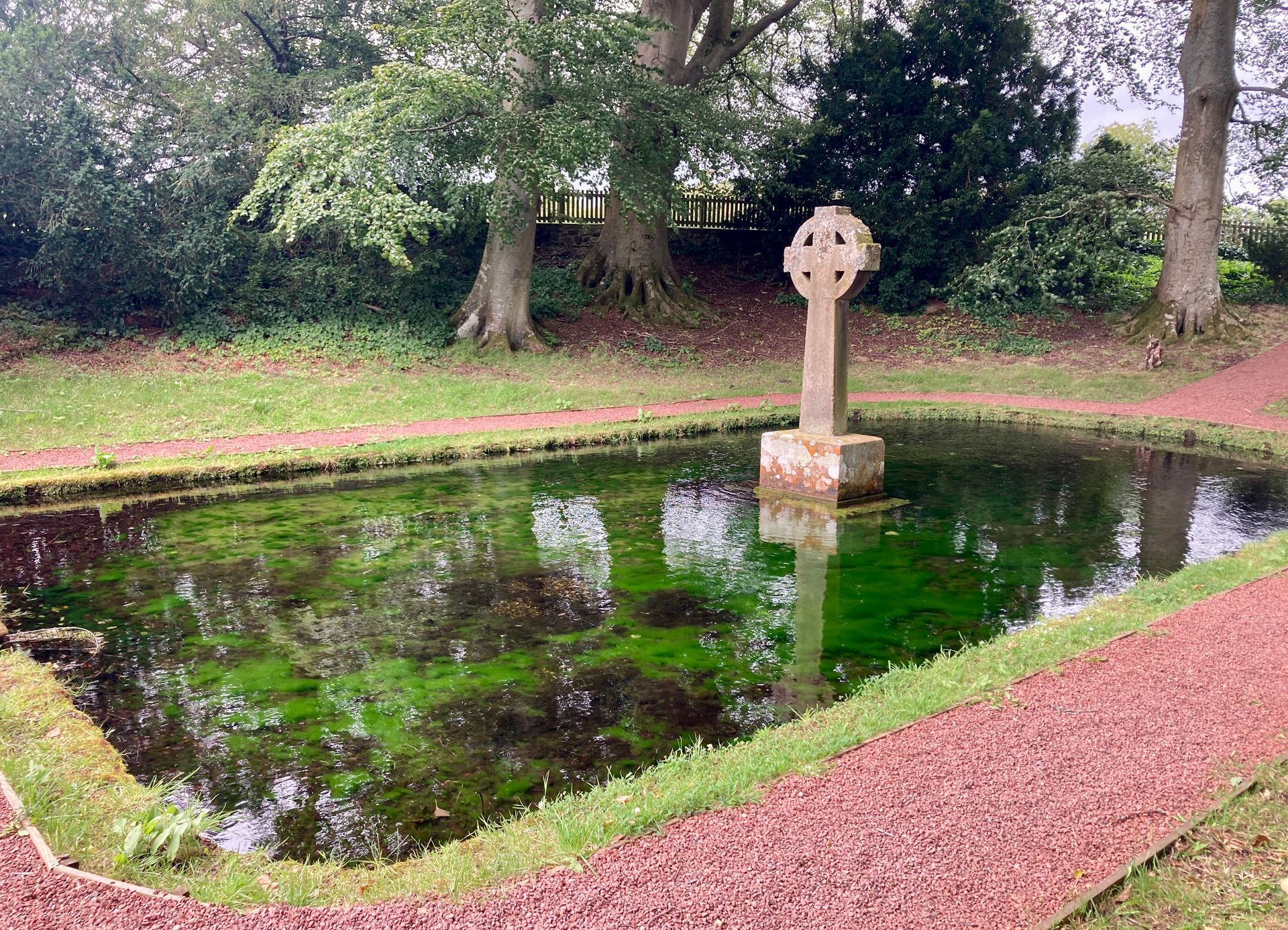
The Lady's Well at Holystone
About the route
The destination of the Way is the Lady’s Well at Holystone. The C5 missionary St Ninian is said to have preached here and to have baptised converts to Christianity in the well pool. St Paulinus is also linked to the Shrine.
From the Cathedral of St Mary in Newcastle the route passes through central Newcastle calling at the churches of St Andrew and St Dominic. After a short walk beside Ouseburn the Shrine of St Mary's Chapel, Jesmond is reached. The Way crosses northern Newcastle passing the Church of St Charles Borromeo in Gosforth. After more suburban walking countryside is reached and the Way heads northwest to reach the Church of St Matthew, Ponteland. More walking across farmland follows before joining the St Oswald’s Way at Kirkwelpington.
The Way travels north, crossing Harwood Forest to Rothbury where the Holystone Way leaves the St Oswald's Way. The Way turns west passing the Church of St Agnes in Rothbury and then the Church of All Saints in Thropton, both sadly closed (2024). Finally a delightful path follows the River Coquet to reach the Lady’s Well at Holystone.
You can find out more about the Way and download the GPX file by clicking on the LEARN MORE tab in the
interactive map below
Guidance
Using the tabs in this section you can find the information you need for your pilgrimage.
The Outer Way provides practical advice about the route.
The Inner Way describes the spiritual highlights.
Using the button below you can download details of the inner and outer ways and the walking guidance and maps.
Stages: route, food & drink, accommodation and public transport
1. The Cathedral of St Mary, Newcastle to St Mary’s Chapel, Jesmond – 3.4 miles
The route passes the inner-city Churches of St Andrew and St Dominic and then follows a green corridor through Heaton and Armstrong parks to reach the chapel. There are plenty of shops, pubs, restaurants and accommodation in central Newcastle. The cathedral is opposite the main railway station and near the coach station. There is a café in Heaton Park and there are buses back to central Newcastle on Reid Park Rd about 0.5 miles west of the Chapel in Jesmond.
2. St Mary’s Chapel, Jesmond to the Church of St Charles Borromeo, Gosforth – 2 miles
The Way returns to follow Ouseburn through parkland to reach South Gosforth and then becomes suburban. There are shops, pubs and cafés in Gosforth on the High St, and buses back to central Newcastle.
3. The Church of St Charles Borromeo to the Church of St Matthew, Ponteland – 7.7 miles
The route is suburban to the A1 and then through parks to reach Ponteland Rd. A long stretch on pavement follows until the Way turns left to cross over the A696. Great care is needed on this short section. The Way is then along farm tracks and a delightful stretch of disused railway line. There are pubs at either end of the Ponteland Rd section. There are shops, pubs, restaurants and accommodation in Ponteland. The bus network can be accessed at several points along the route.
4. The Church of St Matthew, Ponteland to Kirkwelpington – 16.3 miles
The Way follows farm tracks and quiet lanes. In places the path can be rather overgrown, and some paths ploughed, but passable with common sense and care. The final section from Capheaton is delightful. There is a café at Kirkhale, but otherwise no facilities enroute. There is a shop and B&B accommodation in Kirkwelpington, but no pub. There is a bus service along the A696.
5. Kirkwelpington to the Church of St Agnes, Rothbury – 15 miles
The route is over open moorland and through forestry. It is remote and there are no facilities enroute. In places the St Oswald’s Way and the public footpaths do not coincide with the tracks, so care should be taken with orientation. There are shops, pubs, cafés and restaurants in Rothbury and a bus service to Morpeth station and Newcastle.
6. The Church of St Agnes, Rothbury to the Lady’s Well, Holystone – 9.5 miles
This is a lovely walk beside the River Coquet. There are shops and pubs in Thropton, but no other facilities on the route. There is an infrequent bus service from Holystone back to Rothbury.
Public transport links
Trains:
https://www.nationalrail.co.uk/
Coaches:
https://www.nationalexpress.com/en
Buses:
https://www.northumberland.gov.uk/Transport/Bus-travel/Bus-timetables-and-fares.aspx
Pilgrim People & Places
NB Many churches are closed during daylight hours. If you would like to visit the churches and shrines it is best to check the parish website first. You can also email or phone the parish office to see is someone would be willing to open the church. Please be aware that many priests cover more than one church and so may live many miles away.
The Cathedral of St Mary, Newcastle
In 1838 Newcastle Catholics decided to endeavour to erect a ‘large and handsome church’, with capacity for 1,200. By 1842 £6,500 had been raised and a site purchased. A.W.N. Pugin, was commissioned to prepare designs, including a tower and spire, but the budget did not allow for these to be built immediately. The church was opened in 1844. After the restoration of the hierarchy in 1850, St Mary’s became the cathedral of the new Diocese of Hexham (from 1861 Hexham and Newcastle). The cathedral was consecrated in 1860. In 1872 the upper stages of the tower and a spire were added. In 1894 the interior was enriched with stencil decoration. The cathedral suffered bomb damage in the WWII. In 2002 the Cardinal Hume memorial garden was opened by the Queen.
The Church of St Andrew, Newcastle
Newcastle’s first post-Reformation Catholic church was built in 1798, in the large garden behind Fr James Worswick’s house in Pilgrim Street. Fr Worswick (1771-1843) was the effective founder of the Newcastle mission. The mission was served by the Dominicans from 1860 until 1873, soon after which both house and church were demolished to make way for a new street, named Worswick Street. The present stone-built Gothic town church and presbytery was opened in 1875. There is some uncertainty about the identity of the architect. The church was consecrated in 1921 and reordered in 1993-94. It is home to the university Catholic chaplaincy.
The Church of St Dominic, Newcastle
The Dominicans established a house in Newcastle in 1239 in the western part of the medieval town. At the Dissolution, Blackfriars was sold to the mayor and burgesses, who leased it to various town guilds. Recently the building has been restored as an up-market restaurant, which claims to the oldest dining room in England!
The modern history of the Dominicans in Newcastle began with their 1860 agreement to run the mission of St Andrew’s. They acquired the site of St Dominic’s in 1863. At the time the area was poor with many people living in crowded conditions. The foundation stone for the present church was laid in 1869, and it was opened in 1873 by Cardinal Manning. It is built in a northern European transitional Romanesque-Gothic style. There is a sarcophagus altar, dating from 1798, from Fr Worswick’s demolished church of St Andrew in Pilgrim Street, which had been served by the Dominicans before their move to St Dominic’s. In the C20 an upper chapel of St Dominic was added with a fine carved St Dominic. The Dominicans left Newcastle after 160 years, and the church is now in the care of the Jesuits.
The Chapel of St Mary, Jesmond Dene
Before the Norman conquest an apparition of the Virgin Mary holding the infant Jesus was said to have occurred near this site. A chapel was built in the C12, perhaps the oldest church building in Newcastle. Pilgrims started to come to Jesmond from Newcastle and beyond, staying at inns on Pilgrim St. It is believed that the chapel housed relics and the building was extended in the C14. After the suppression of the monasteries, Edward VI sold the chapel to Newcastle. It had many owners but in 1883 Lord Armstrong returned the building to the city. Today, only evocative ruins are left, but there are occasional pilgrimages, some including Catholic and Muslim women who share a devotion to Mary.
The Church of St Charles Borromeo, Gosforth
The first St Charles’ chapel and school were built in 1861 at Coxlodge, west of Gosforth. In 1896 a corrugated iron chapel opened in Church Road beside the current site. The foundation stone for the present church was laid by in 1910. The building was opened in 1911 and the old church became the parish school. To start with the church was internally quite bare apart from marble cladding in the sanctuary, but it was enriched over time. In the 1920s a gallery was added at the west end of the nave for a new organ. In 1932 many of the remaining bare walls were clad with Italian marble. After the war three fine stained-glass windows were installed. In 1970 a wide glass porch was added at the west end of the church, enclosing the entrance doors. The interior was reordered in 1985-6. In 2003-04 the old ‘tin’ church (later the parish school) was demolished. A new parish centre was built, and the school relocated to Regent Farm Rd.
The Church of St Matthew, Ponteland
The church has its origins in the Ponteland Mission of 1894. Around 1902 a wooden church, with a corrugated iron roof, was built on the site of a former orchard. The first phase of the present church was completed in 1950. It was extended in 1978.
The Church of St Agnes, Rothbury
Although Catholics are documented worshipping in houses around Rothbury from the C17 the mission was established at Thropton. From 1922, Mass was said in an upstairs room of a stable block. Dr Arthur Hedley left enough in his will for the purchase of a triangular piece of sloping land at the west edge of the town. St Agnes’ church was built to seat 130 people and was opened in 1959. The dedication recalls the chapel at West Oak Tree House in Rothbury, which was named after Agnes, prioress of Holystone. Sadly the church is currently closed. The area is served from Alnwick.
The Church of All Saints, Thropton
Cartington Castle, home of the Charlton family, was the focus for Catholics in Thropton from at least 1697. A broken marble plaque recording the generosity of Dame Mary Charlton d.1703 is set into the churchyard wall and there is a slightly edited modern copy is to the right of the W door. Fr Thomas Stout (priest from 1797) rebuilt Thropton Old Hall as a presbytery in 1810 with the present church attached to its W side. The church was later extended. A photograph of c.1900 of the interior shows the present freestanding wooden altar standing against the east wall of the sanctuary, beneath the existing wooden reredos. There were wooden altar rails, large Stations of the Cross around the nave and stencilling to the sanctuary. The church was re-ordered in the late C20 and re-decorated in 2009. The presbytery has been sold and sadly the church is currently closed. The area is served from Alnwick.
The well was once a watering place beside the Roman road from Bremenium in Redesdale to the coast. It was probably the Romans who built a low stone wall around a spring's outflow to create a rectangular pool. The C5 St Ninian, known as the Apostle to the Southern Picts, is said to have baptised many early Christians in its water. Bede recorded the tradition that Ninian was a Briton who had studied in Rome, established an episcopal see at the Candida Casa in Whithorn, Galloway, named after Saint Martin of Tours, and that he is buried at Whithorn. St Paulinus (d. 644) is said to have baptised over 3000 Northumbrians in Lady's Well during Easter week of AD 627. He is said to have knelt on a flat stone now known as the Holy Stone, from which the village takes its name.
In medieval times the well was dedicated to the Virgin Mary and in the early C12 a community of Augustinian canonesses settled in Holystone. Their Priory was immediately to the south of the current church. It was destroyed at the Reformation, but the well survived. A stone cross was placed in the centre of the pool during the C19, and a statue of St Paulinus was brought from Alnwick. The spring was the source of the village’s water supply until 1998. Today the Lady’s Well is in the care of the National Trust and is a wonderful place for quiet reflection and prayer. There are many pilgrims and occasionally Mass is celebrated.
ABOUT THE DIOCESE OF HEXHAM & NEWCASTLE
The Diocese of Hexham was revived in 1850 when the Catholic hierarchy of England and Wales was restored. Although the ancient See of Hexham was founded in 678 it had later lapsed. The modern diocese was expanded to include the title of Newcastle in 1861. In 1924, Pope Pius XI withdrew the old counties of Cumberland and Westmorland to incorporate them into a newly created Diocese of Lancaster. The modern Diocese of Hexham and Newcastle comprises the counties of Northumberland, Tyne and Wear and County Durham and so three cities: Newcastle upon Tyne, Durham and Sunderland. The diocese was also home to the regional seminary for the north of England, Ushaw College, near Durham.
Copyright Hearts in Search of God - Pilgrim Way Project (England and Wales)
Web Design by Catholic Marketing Agency: Every Day Christian Marketing
